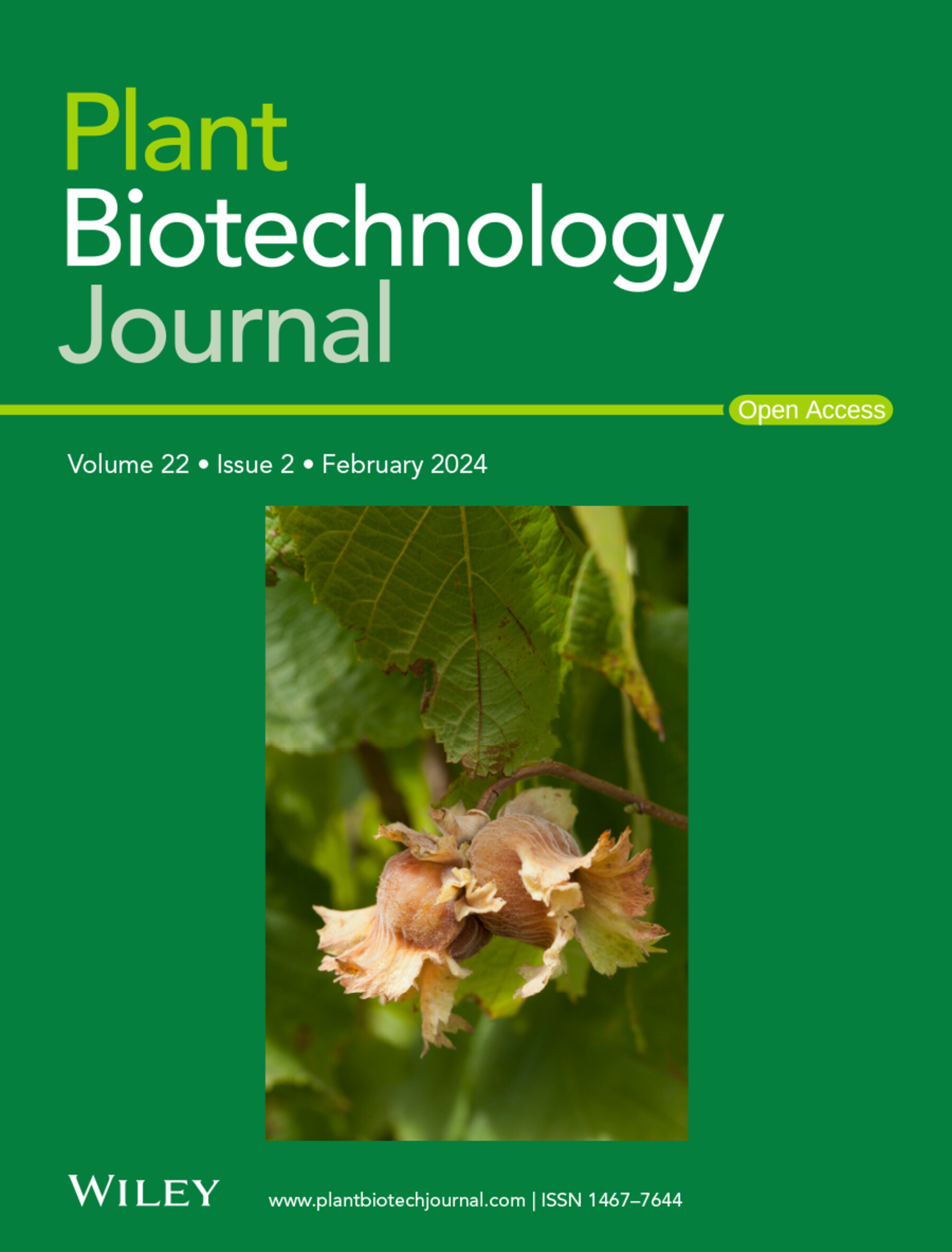Natural Variation of a PPR Coding Gene SST1 Confers Salt Tolerance During Soybean Domestication.
IF 10.5
1区 生物学
Q1 BIOTECHNOLOGY & APPLIED MICROBIOLOGY
引用次数: 0
Abstract
Soil salinity is one of the constraints that adversely affect seedling growth and limit soybean yield. Identifying salt tolerance genes and profiling their allele variants are crucial for elucidating the mechanisms underlying salt tolerance in soybean and enabling the genetic improvement of salt-tolerant cultivars. Here, we developed a salt-induced leaf senescence-based screening system to assess salt tolerance and identified a key salt tolerance gene, SST1, which encodes a pentatricopeptide repeat (PPR) protein, via genome-wide association analysis. We showed that the truncated allele SST1HapT, which has a nonsense mutation, increases salt tolerance in soybean, whereas the full-length allele SST1HapC does not. Located in mitochondria, SST1 regulates RNA editing of the mitochondrial genes cob, nad3 and atp6-1, thereby influencing mitochondrial morphology and H2O2 homeostasis in root cells. SST1 is an adaptive domestication-related gene; the truncated SST1HapT allele is exclusively fixed in cultivated soybean but absent in wild soybean, indicating selection under increasing soil salinity during domestication. Furthermore, our results revealed that SST1 regulates salt tolerance by synergistic interaction with GmCHX1, a pivotal salt tolerance gene unselected during domestication. Our findings provide valuable insights into soybean domestication and offer targets for enhancing soybean salt tolerance.PPR编码基因SST1的自然变异在大豆驯化过程中具有耐盐性。
土壤盐分是影响大豆幼苗生长和限制大豆产量的制约因素之一。鉴定耐盐基因及其等位基因变异对阐明大豆耐盐机制和进行耐盐品种遗传改良具有重要意义。在这里,我们建立了一个基于盐诱导的叶片衰老筛选系统来评估盐耐受性,并通过全基因组关联分析鉴定了一个关键的盐耐受性基因SST1,该基因编码五肽重复(PPR)蛋白。我们发现截断的等位基因SST1HapT具有无义突变,增加了大豆的耐盐性,而全长等位基因SST1HapC则没有。SST1位于线粒体中,调控线粒体基因cob、nad3和atp6-1的RNA编辑,从而影响根细胞线粒体形态和H2O2稳态。SST1是适应性驯化相关基因;截断的SST1HapT等位基因在栽培大豆中完全固定,而在野生大豆中不存在,这表明驯化过程中土壤盐分增加导致了选择。此外,我们的研究结果表明,SST1通过与GmCHX1的协同相互作用调节盐耐受性,GmCHX1是驯化过程中未被选择的关键耐盐基因。我们的研究结果为大豆驯化提供了有价值的见解,并为提高大豆耐盐性提供了靶点。
本文章由计算机程序翻译,如有差异,请以英文原文为准。
求助全文
约1分钟内获得全文
求助全文
来源期刊

Plant Biotechnology Journal
生物-生物工程与应用微生物
CiteScore
20.50
自引率
2.90%
发文量
201
审稿时长
1 months
期刊介绍:
Plant Biotechnology Journal aspires to publish original research and insightful reviews of high impact, authored by prominent researchers in applied plant science. The journal places a special emphasis on molecular plant sciences and their practical applications through plant biotechnology. Our goal is to establish a platform for showcasing significant advances in the field, encompassing curiosity-driven studies with potential applications, strategic research in plant biotechnology, scientific analysis of crucial issues for the beneficial utilization of plant sciences, and assessments of the performance of plant biotechnology products in practical applications.
 求助内容:
求助内容: 应助结果提醒方式:
应助结果提醒方式:


